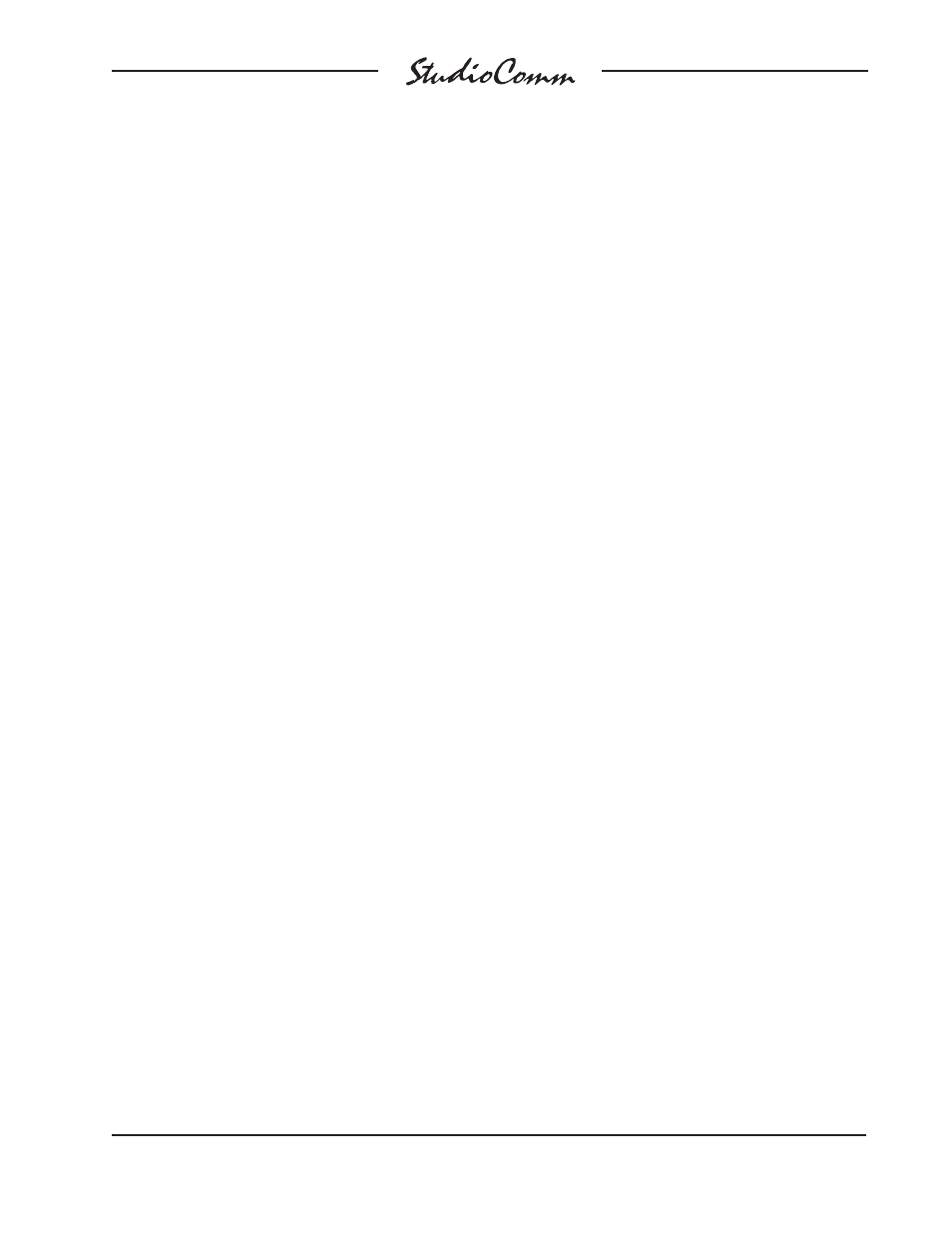Sync source, Sync input termination, Audio-synced-to-video sample rate – Studio Technologies 780-03 V.4.15 User Manual
Page 19: Reference level

Model 780-03/790 User Guide
Issue 1, April 2015
Studio Technologies, Inc.
Page 19
for Surround
post-fader digital and analog monitor out-
puts. One configuration parameter is used
to enable or disable bass management
while three others are used to select the
characteristics of the associated audio fil-
ters. While the settings are simple to make,
great care must be taken to first review the
entire monitor system. Only after obtaining
a full understanding of the performance of
the associated loudspeaker system can a
plan for the bass management functions
be selected.
The bass management function impacts
only the post-fader digital and analog
monitor outputs and by default is disabled.
The crossover point of the seven main
channels’ bass management filters can
be selected from among four choices: 40,
50, 60, or 80 Hz. The default value is 80
Hz. The slope of the low-pass and high-
pass filters associated with the seven main
channels’ bass management filters can be,
as a group, selected. The choices are 12
dB-per-octave or 24 dB-per-octave with the
latter being the default value. Setting the
slopes to different values (asymmetrical fil-
tering on the seven main channels) can be
appropriate for some loudspeaker systems.
Sync Source
The Model 780-03 requires that a des-
ignated external timing reference (sync)
signal be defined. Three of the choices—
video, DARS, and word clock—are as-
sociated with a signal that is connected to
the sync input BNC connector. The fourth
choice allows the L/R input of the currently
selected digital surround or stereo input
to also serve as the system’s sync source.
This fourth choice is the default value.
Sync Input Termination
The sync input circuitry can be configured
to provide a termination impedance of 75
ohms to a connected source. When the
sync input is not terminated the input im-
pedance is very high, essentially applying
no load to the source. If the sync source is
connected only to the Model 780-03’s BNC
input connector then enabling termination
is typically appropriate. However, if the
sync source is being “shared” by multiple
inputs then care must be taken so that the
signal is only terminated by one device. By
default sync termination is enabled.
Audio-Synced-to-Video
Sample Rate
If a video sync signal is connected to
the sync input and video is selected as
the Model 780-03’s timing reference the
sample rate of the connected digital au-
dio signals must be explicitly specified. In
most cases the default value of 48 kHz will
be appropriate. But alternately 44.1, 88.2,
or 96 kHz can also be selected. This set-
ting enables the internal clock and timing
circuitry to correctly interpret the video
sync signal’s relationship to the connected
digital audio sources.
Reference Level
For consistent monitoring of audio signals
it’s often beneficial for users to be able to
easily set the post-fader digital and analog
monitor output level to a known value. This
is sometimes referred to as “mixing to 85
dB on the monitors,” but the exact value
will depend on the application. The Studio-
Comm system allows a precise post-fader
digital and analog monitor output level to
be stored and then enabled by pressing
the Model 790 button labeled Reference
